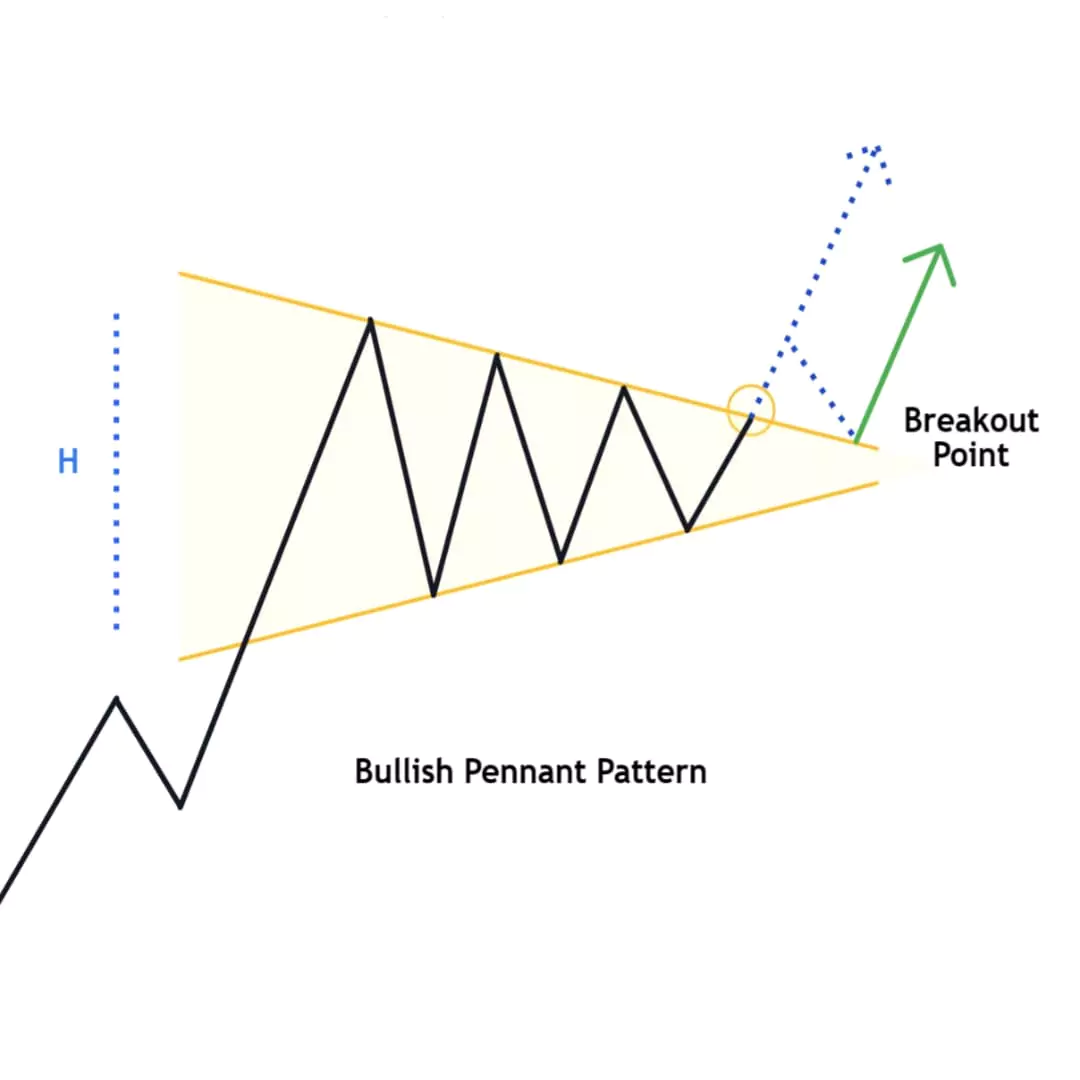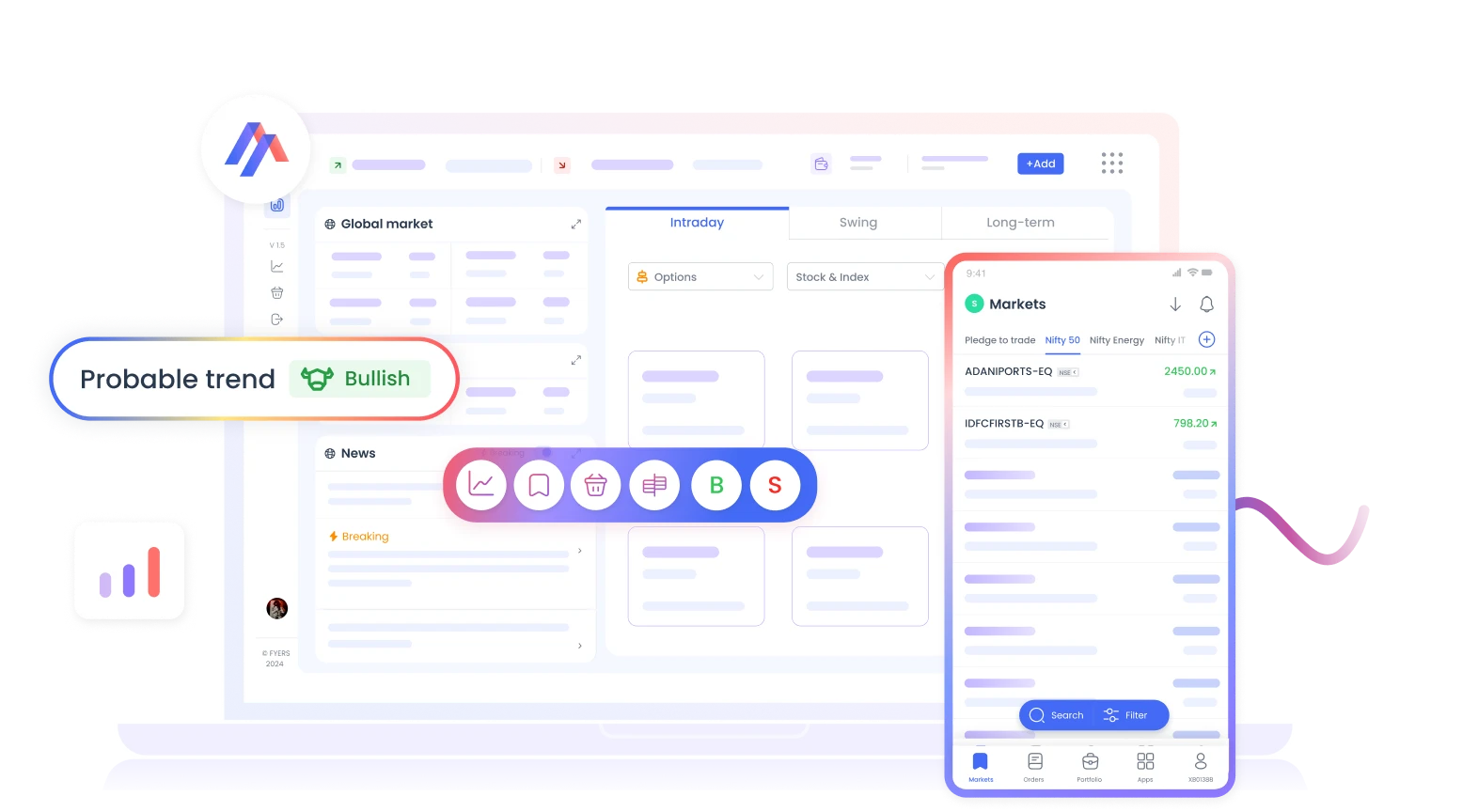Summary: The Bullish Pennant Chart Pattern is a continuation pattern that forms after a strong bullish move, then pauses sideways and forms a small triangle shape. This pattern shows that the price may rise again after a short break. Traders use it to find good buying opportunities with the direction of a trend.
In this blog post, we’ll learn about the bullish pennant chart pattern, how to identify it, trading strategies, examples, and essential tips to consider while trading with it. So, let’s discuss…
What is the Bullish Pennant Chart Pattern?

The Bullish Pennant Pattern is a popular continuation pattern used in technical analysis to identify an uptrend.
This pattern forms after a strong uptrend and it takes a pause and moves sideways in a small symmetrical triangle, representing a perfect period of consolidation before a breakout. This pattern also looks like same as the pole and flag but the difference is that prices are moving in a tight symmetrical triangle.
It’s a popular technical pattern that helps traders spot good entry points during trend continuation.
How to Identify Bullish Pennant Pattern
To find a Bullish Pennant Pattern, Just follow this steps
- Bullish Trend: First find a strong Uptrend
- Pennant: A small symmetrical triangle converging with trendlines showing tight consolodation.
- The pattern is only confirmed when the price breaks out bove the upper trendline.
Formation of Bullish Pennant Pattern
Bullish Sentiment
Prices move sharply upward direction in a short period represents a strong bullish momentum.
This usually happens after a major news event or breakout from another chart pattern showing strong buying interest.
Pennant Formation
After a strong bullish trend price enters a narrow consolidation phase and creates a small symmetrical triangle. Showing a sideways momentum.
Breakout Point
When the pause is over and price breaks above the upper trendline of the pennent so we see a sharp and quick bullish breakout confirming the continuation of the trend.
How to Trade Bullish Pennant Pattern
Here’s the complete guide, how traders can trade this pattern…
Entery Point
Enter the trade when price breaks above the upper trendline of the pennant and wait for a candle close above the trendline confirmation.
Or you can wait for a Retest/Pullback to protect from falls breakdown
Stop Loss
Place the stop loss below the bottom of the recent swing low.
If the price moves in your direction, trail your stop loss using this technical indicator to protect your gains.
Profit Target
First measure the high of the sideways consolidation phase, then add that same distance above the point where the breakout happens. This gives you a rough idea of where the price might go next.
Pros & Cons of Bullish Pennant Chart Pattern
Pros
- Pattern helps to follow the trend by entering trades in the direction.
- Provides well-defined entry, stop-loss, and target levels.
- Suitable for short-term trading
Cons
- Requires high patience when market is in tight consolidation. (Sideways)
- False breakouts possible (Candle Wicks)
Common Mistakes to Avoid
When trading with this pattern, avoid some common mistakes like trading inside the range and relying too much on textbook patterns.
- Don’t trade inside the pennant. Wait for a clean breakout.
- Misidentifying flags and triangles as pennants.
Most importantly, if the pattern looks confusing, it’s okay to skip the trade to protect your capital is more important.
Have you traded the pennent pattern before? What is your favorite chart pattern aside from the pennant?
Let me know in the comments below!…..

